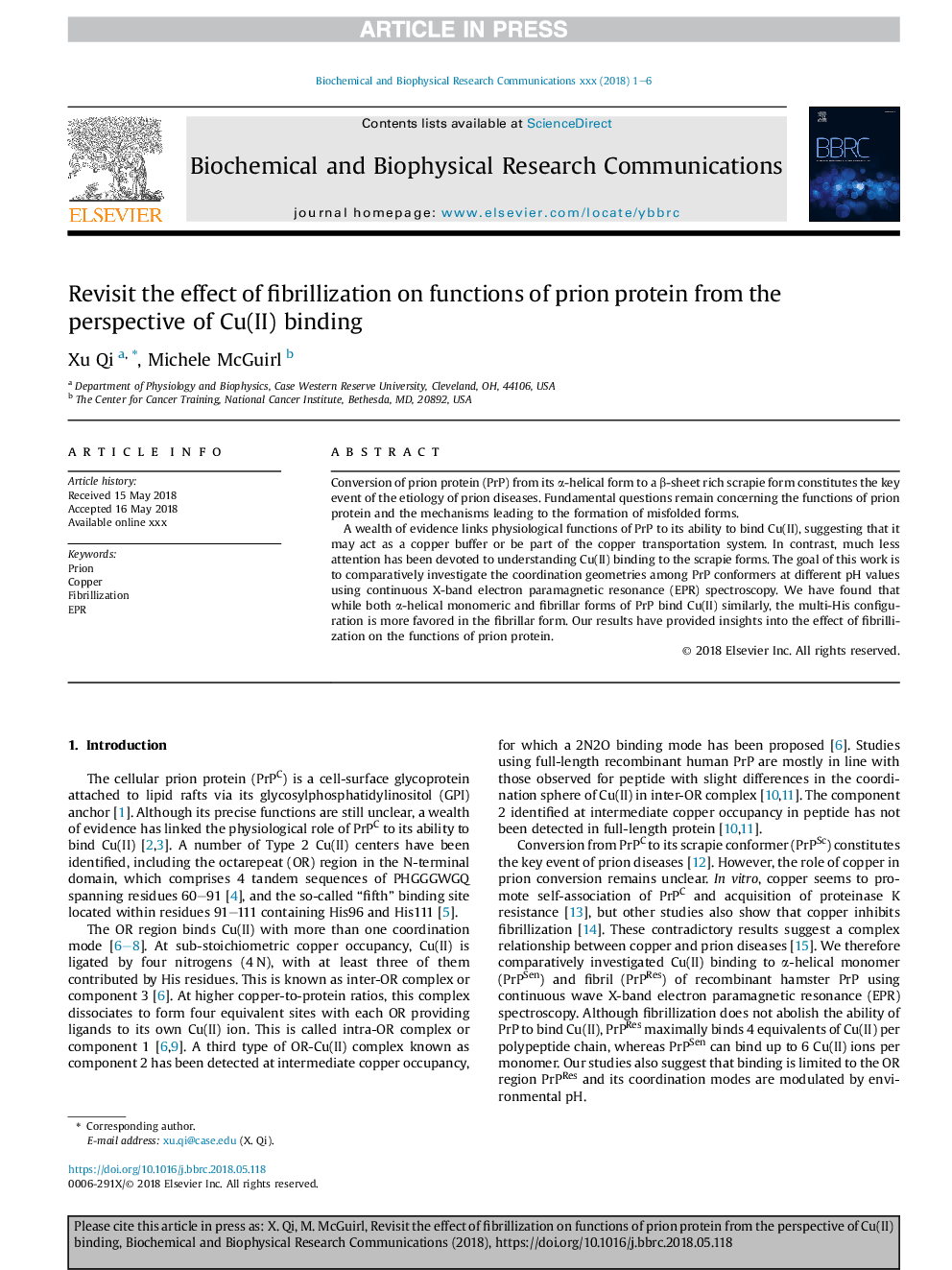| Article ID | Journal | Published Year | Pages | File Type |
|---|---|---|---|---|
| 8292264 | Biochemical and Biophysical Research Communications | 2018 | 6 Pages |
Abstract
A wealth of evidence links physiological functions of PrP to its ability to bind Cu(II), suggesting that it may act as a copper buffer or be part of the copper transportation system. In contrast, much less attention has been devoted to understanding Cu(II) binding to the scrapie forms. The goal of this work is to comparatively investigate the coordination geometries among PrP conformers at different pH values using continuous X-band electron paramagnetic resonance (EPR) spectroscopy. We have found that while both α-helical monomeric and fibrillar forms of PrP bind Cu(II) similarly, the multi-His configuration is more favored in the fibrillar form. Our results have provided insights into the effect of fibrillization on the functions of prion protein.
Keywords
Related Topics
Life Sciences
Biochemistry, Genetics and Molecular Biology
Biochemistry
Authors
Xu Qi, Michele McGuirl,
